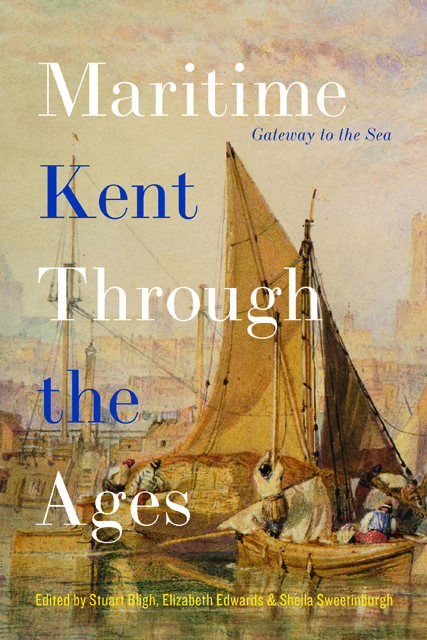16 - The Political and Strategic Importance of the Port of Sandwich in the Later Middle Ages c.1340–1500
Published online by Cambridge University Press: 20 December 2023
Summary
Sandwich is renowned nowadays largely because it is an unusually well-preserved small medieval town. Although often described as a leading member of the group known as the Cinque Ports, its current position some two and a half miles from the sea by road means that its considerable strategic and political importance as the terminus of one of the most important sea routes in our period, connecting southern England to both northern France and Flanders, is often overlooked.
Crucial to this is an understanding of the position of Sandwich on the coast; its advantages and disadvantages. We also need to consider the general difficulties presented to the ships and mariners of this period when navigating in the English Channel, the Dover Strait and the southern North Sea. The biggest potential problem was perhaps the tidal regime in this area. By the second half of the fifteenth century the ebb and flow of tides and the connection of this with the phases of the moon were well understood by the great majority of shipmasters, even of small craft. The well-known picture of the Shipman included in Chaucer’s Prologue to the Canterbury Tales includes the claim that he could ‘rekene wel his tydes, his stremes and his daungers hym besides his herberwe and his moone … he knew alle the havens as they were from Gootland to the cape of Fynistere and every cryke in Britaigne and in Spayne’. Although perhaps overstating the case, there was little alternative to memorising the necessary details. The essential piece of information regarding tides for a shipmaster was to know what was called ‘the tide hour’ or High Water Full and Change or the Establishment of a port, that is the time and date when High Water at the next spring tides was to be expected. (This was, of course, governed by the phases of the moon and could be estimated in advance.) Rutters or sailing directions, certainly in existence for northern waters in the early fifteenth century, gave some basic directions for important destinations but there was no published overall view of this kind of information until the early seventeenth century.
- Type
- Chapter
- Information
- Maritime Kent through the AgesGateway to the Sea, pp. 371 - 386Publisher: Boydell & BrewerPrint publication year: 2021



